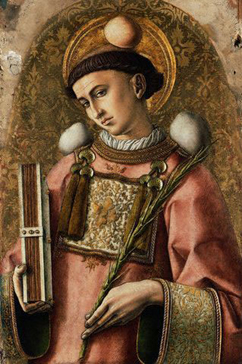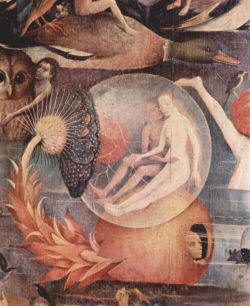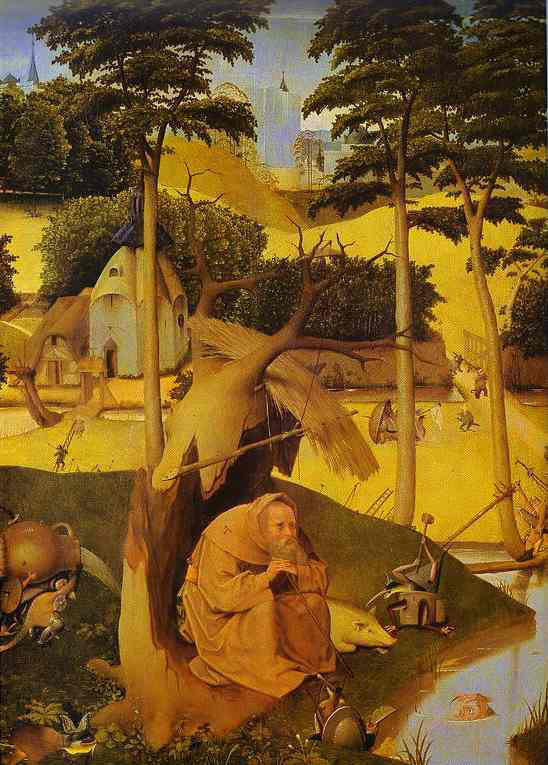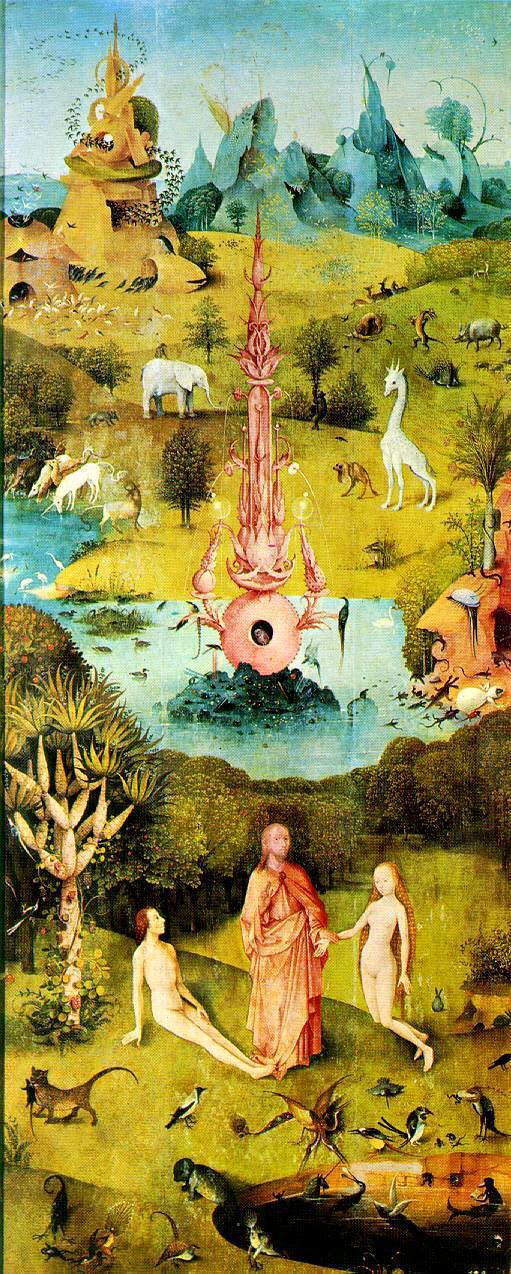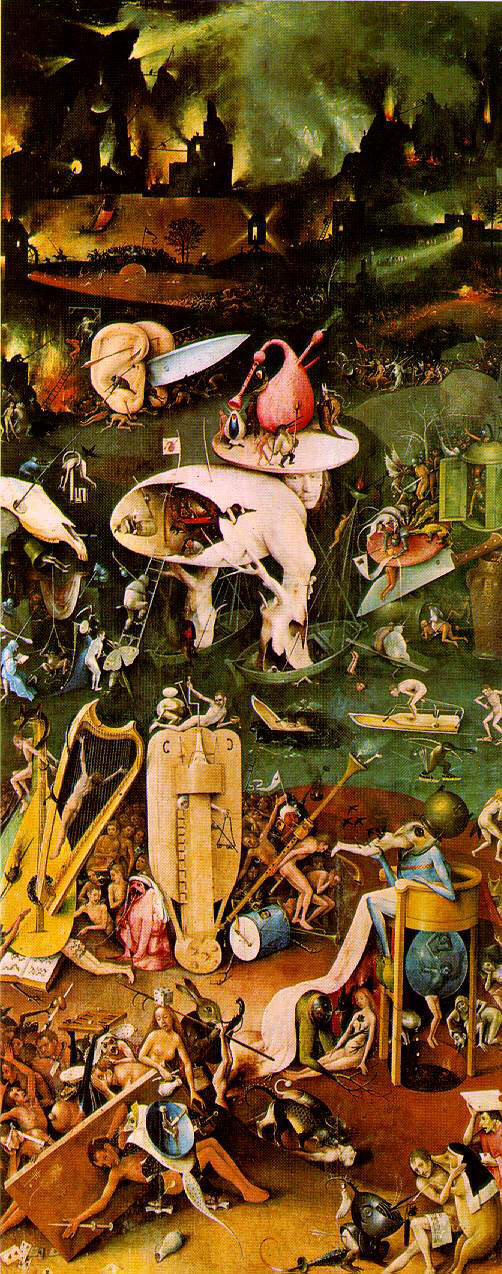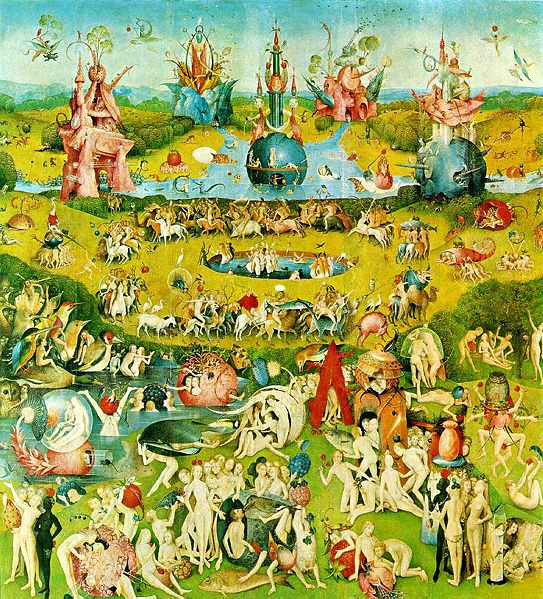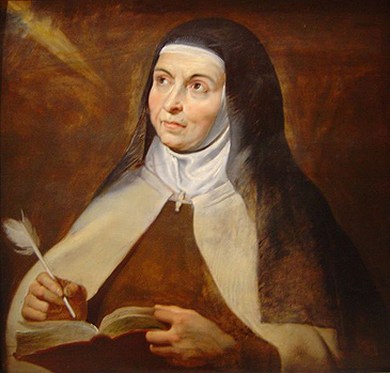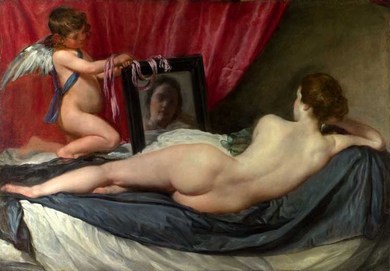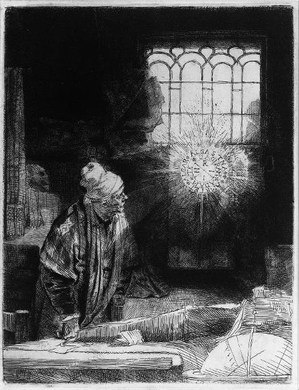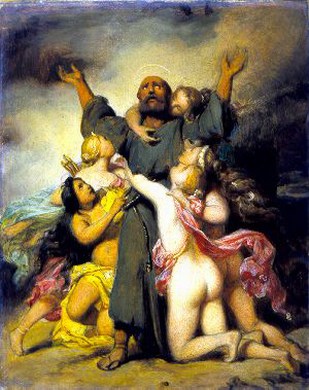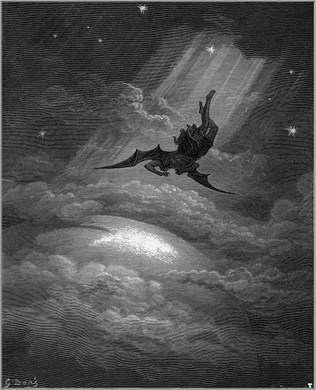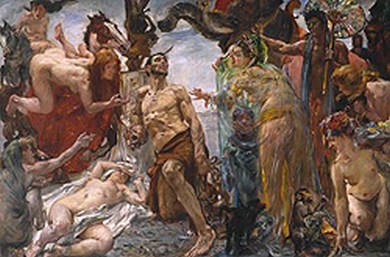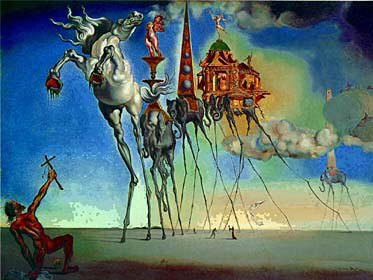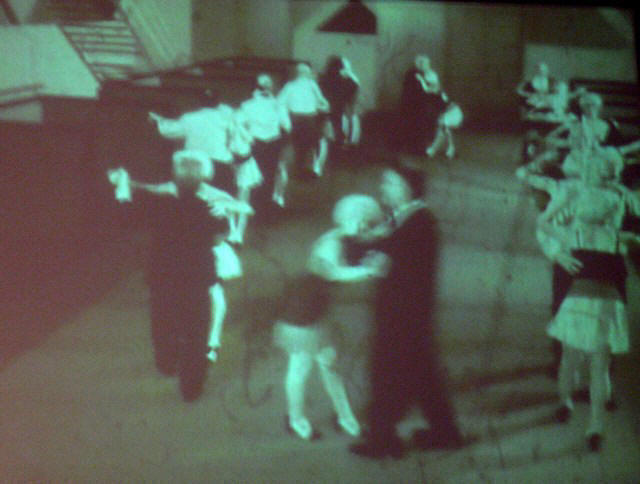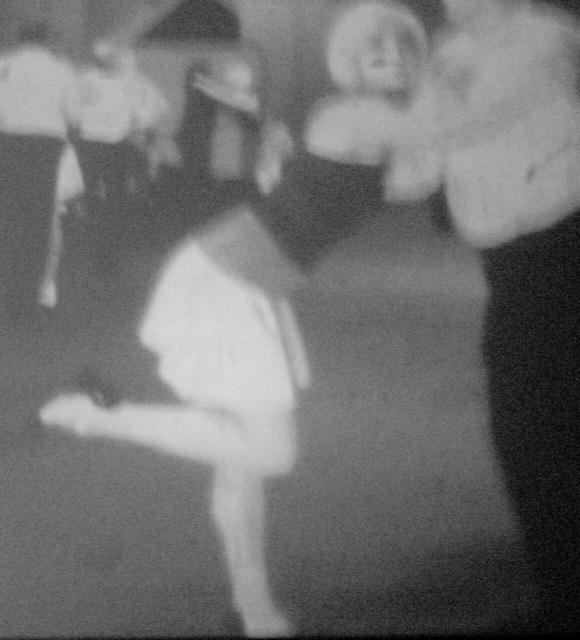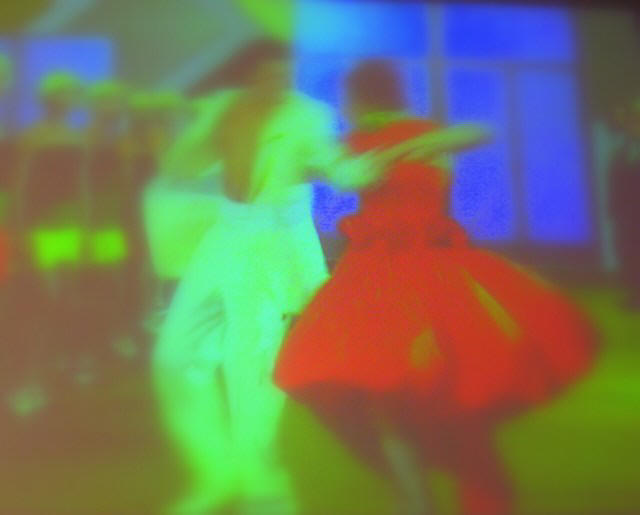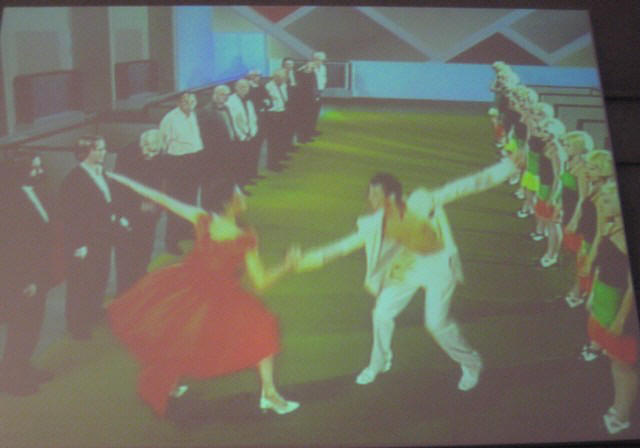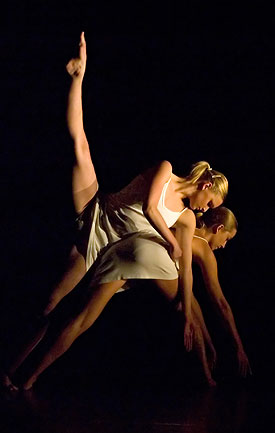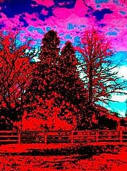
Cedar Gallery
Home
|
Cedar info |
News |
Contact |
![]() Dutch
Dutch
![]()
Famous is the temptation of Saint
Anthony. The devil fought St
Anthony by afflicting him with boredom,
laziness, and the phantoms of women,
which he overcame
by the power of prayer,
providing a theme for Christian art.
After that, he moved to a tomb, where he
resided and closed the door on himself,
depending on some local
villagers who
brought him food. When the devil
perceived his ascetic life and his
intense worship, he was envious and beat
him mercilessly, leaving him unconscious.
When his friends from the local village
came to visit him and found him in this
condition, they carried him to a church.
|
Carlo Crivelli, Saint Stefanus, 1476, with three stones, palm and book |
Saint Stefanus
|
|
Hiëronymus Bosch (detail Garden of Delights) |
Hiëronymus Bosch,
|
|
Hiëronymus Bosch Garden of Delights
|
Hiëronymus Bosch, Garden of Delights |
|
Hiëronymus Bosch, Garden of Delights |
|
|
Theresia of Avila |
Theresia of Avila (1515-1582) had a bad health and was seriously ill. During these years of suffering she began the practise of mental prayer, especially when she came under the influence of the Jesuits. Meanwhile God had begun to visit her with visions and locutions, that is manifestations in which the exterior senses were in no way affected, the things seen and the words heard being directly impresses upon her mind, giving her strength in trials, reprimanding her for unfaithfullness, and consoling her in trouble. Theresa wrote to make clear, that what happened to her was the work of God, and not that of the devil.
|
|
The Rockeby Venus |
The Rockeby
Venus (1649/51), Diego Rodriguez de Silva Y Velázquez
(1599-1660)
Venus, the goddess
of love and a personification of female beauty, is lying
on a bed, watching herself in a mirror. Her son Amor (or Cupid)
is holding the mirror, and looks at her reflection. Via the
mirror Venus is watching us, and we are looking at her face. Or? |
|
Faust, (1652?), Rembrandt Harmensz. van Rijn, Rijksmuseum Amsterdam |
An old man looks up from his work. A bright, radiating disk has appeared at the window of his study. Within the circle of light is a mysterious text. It is an anagram, the letters are not in the correct order. Although the room is poorly lit, the books, the globe and the skull can be perceived. |
|
The Temptation of Saint Anthony (1832?), Hippolyte Delaroche |
Illustration for John Milton's 'Paradise Lost' by Gustave Doré (1866) |
|
The Temptation of St. Antony after Gustave Flaubert (1908),
Lovis Corinth (1858-1925) |
The Temptation of St. Anthony (1946), Salvador Dali.
|
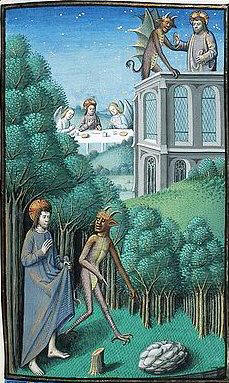
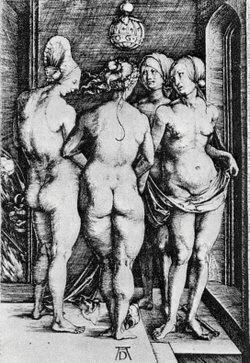
The four witches (Dürer,1497)
Mary of Nimeguen
The Rederijker
play, Mariken van Nimweghen (Mary of Nimeguen) comes close to a
contemporary version of drama. The play is about a girl who
becomes the mistress of Satan.
Mariken begins the play as an
innocent who travels to the nearby town of Nimeguen to shop for
her guardian/uncle. Finding she has stayed too late, Mariken
seeks shelter for
the night at the house of her aunt. The aunt
insults the girl and drives her from her house.
The aunt's insults include an allegation of an incestuous
relationship between the girl and her uncle, as well as a hint
that the aunt may attack Mariken. Mariken is so
depressed that
she walks out of town alone crying for help from "God or the
Devil, it's all the same to me."
Mariken encounters Lucifer,
disguised as a one-eyed, itinerant scholar, who offers to teach
her magic and the seven liberal arts in return for her
submission. She becomes his
mistress and together they travel
the country. While in Antwerp, she happens to witness a
wagon-play that convinces her to repent. She leaves Lucifer and
returns to her old
uncle. Together they journey to the Pope
himself to find absolution for Mariken's sins. After many years
of heavy penance, a miracle signals her divine forgiveness.
Moenen, Piet Killaers
|
|
Dance
|
|
|
|
Cleopatra, |
|
|
|
dance!
|
|
Isle of the Dead, Atlantis, or 'island of Atlas'
Isle of the Dead, Atlantis,
or 'island of Atlas', is the name of a legendary island first
mentioned in Plato's dialogues Timaeus and Critias.
According to Plato, Atlantis was a naval power that conquered
many parts of Western Europe and Africa, approximately 9500 BC.
After a failed attempt to invade Athens, Atlantis sank into the
ocean 'in a single day and night of misfortune'.
As a story, embedded in Plato's dialogues, Atlantis is generally
seen as a myth created by Plato.
What was left from Atlantis was the isle of dead, according to some traditions. On the desolate and isolated isle of dead one should be able to return to the great estate of the original inhabitants. The isle of death is also connected with the travels and ventures of mythological persons like Hercules or the hero of the Gilgamesj-epos.
The story of Plato about a
mythic isle is known all over the world, in many stories. They
tell about a paradise on earth, that goes down by natural
disasters, like earthquakes
or floods.
Exorcism
Exorcism is the rite
of driving out the Devil and his demons from possessed persons.
A general assumption is that the Roman Catholic singularly
practices the rite of exorcism,
but some Protestant
denominations practice it as well. In these groups gifted people
drive out devils and heal while they touch the persons with
their hands, called laying on
of hands, and pray over them.
Exorcism is not driving out the Devil or a demon, but it is
placing the Devil or demon on oath. Sometimes there are more
than one demon possessing a person.
In the
Christian sense the higher authority is Jesus Christ. The act is based on the
belief that the Devil, his demons, and evil spirits are afraid
of Christ. The belief itself is based
on Scripture. Coming from
the sea of Galilee Christ was met by a man from the tombs cut
into the mountains of the area. The man was said to be possessed
of an unclean
spirit. Nothing could bind this man, not even
chains. He lived in the mountains, crying, and cutting himself
with stones. But, so it is told, when seeing Christ approaching,
the man went to him for help. The demon immediately recognized
Christ, and Christ recognized the demon. Christ summoned the
spirit to leave the man, and asked his name. "My name is Legion,"
answered the spirit, "for we are many." Once the demons left the
man, Christ sent them into a nearby heard of swine who then
jumped in to the sea
and drowned. (Mark 5:1-13) Unlike other
exorcists, it is believed, that Christ did not exorcise because
He did not need to call on a higher authority since He Himself
was
that higher authority.
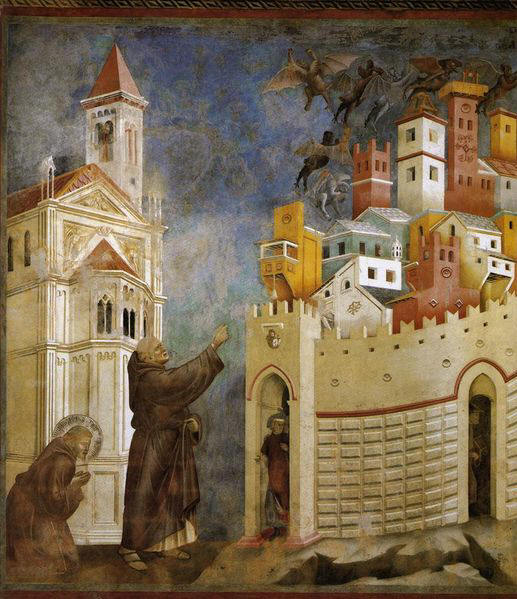
Giotto, Saint
Francis of Assisi exorcising devils in Arezzo
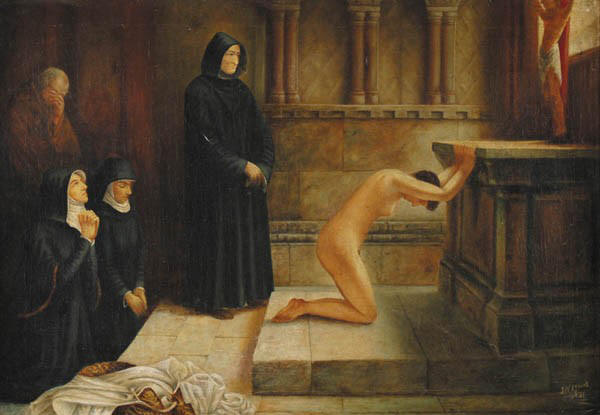
J.W. Lewis, 1881
Original sin
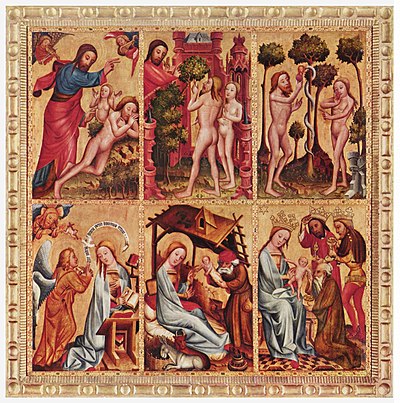
Original sin
Original
sin, called in the Eastern Orthodox tradition
ancestral sin is, according to a doctrine in
Christian theology, humanity's state of sin
resulting from the Fall of Man.
Like other
theological terms, the terms "original sin" and
"ancestral sin" are not found in either the Old
or the New Testament, though the sinfulness of
humans is frequently addressed, but the doctrine
that the terms express is claimed to be based on
passages in the New Testament written by Paul
the Apostle.
In the
history of Christianity this condition has been
characterized in many ways ranging from
something as insignificant as a slight
deficiency, or a tendency toward sin
yet without
collective guilt, referred to as a "sin nature,"
to something as drastic as total depravity
or automatic guilt by all humans through
collective guilt.
Western Christian tradition regards original sin
as the general condition of sinfulness
(lack of holiness) into which human beings are
born, distinct from any actual sins
that
a person may or may not commit later.
Different views exist as to whether a person
bears real guilt or personal responsibility only
for actual sins that they personally commit,
while being tempted by original sin, or whether
they bear actual guilt for the sins of
ancestors.
Eastern Christian tradition too identifies
original sin as physical and spiritual death.
Others see original sin also as the cause of actual sins:
"a bad tree bears bad fruit"
(Matthew
7:17)
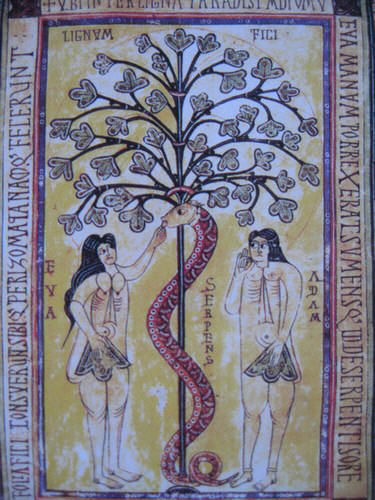
St. Simeon
Stylites
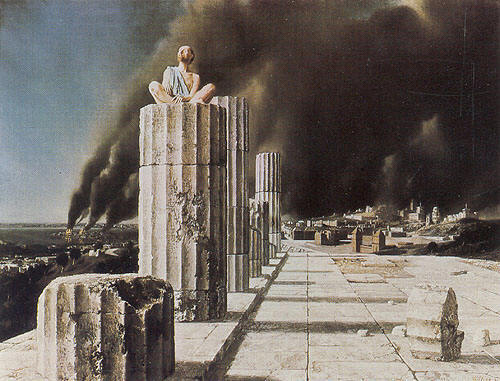
![]()
Carel Willink 1939
Icon 18e century Russia
St. Simeon Stylites (first part)
Although I be the basest of
mankind,
From scalp to sole one slough and crust of sin,
Unfit for earth, unfit for heaven, scarce meet
For troops of devils, mad with blasphemy,
I will not cease to grasp the hope I hold
Of saintdom, and to clamour, mourn and sob,
Battering the gates of heaven with storms of
prayer,
Have mercy, Lord, and take away my sin.
Let this avail, just, dreadful, mighty God,
This not be all in vain, that thrice ten years,
Thrice multiplied by superhuman pangs,
In hungers and in thirsts, fevers and cold,
In coughs, aches, stitches, ulcerous throes and
cramps,
A sign betwixt the meadow and the cloud,
Patient on this tall pillar I have borne
Rain, wind, frost, heat, hail, damp, and sleet,
and snow;
And I had hoped that ere this period closed
Thou wouldst have caught me up into thy rest,
Denying not these weather-beaten limbs
The meed of saints, the white robe and the palm.
O take the meaning, Lord: I do not breathe,
Not whisper, any murmur of complaint.
Pain heaped ten-hundred-fold to this, were still
Less burthen, by ten-hundred-fold, to bear,
Than were those lead-like tons of sin that
crushed
My spirit flat before thee.
O Lord, Lord,
Thou knowest I bore this better at the first,
For I was strong and hale of body then;
And though my teeth, which now are dropped away,
Would chatter with the cold, and all my beard
Was tagged with icy fringes in the moon,
I drowned the whoopings of the owl with sound
Of pious hymns and psalms, and sometimes saw
An angel stand and watch me, as I sang.
Now am I feeble grown; my end draws nigh;
I hope my end draws nigh: half deaf I am,
So that I scarce can hear the people hum
About the column's base, and almost blind,
And scarce can recognize the fields I know;
And both my thighs are rotted with the dew;
Yet cease I not to clamour and to cry,
While my stiff spine can hold my weary head,
Till all my limbs drop piecemeal from the stone,
Have mercy, mercy: take away my sin.
.....
Lord Alfred
Tennyson (1809-1892)
To be continued....
